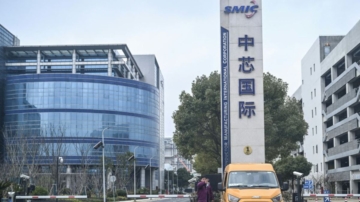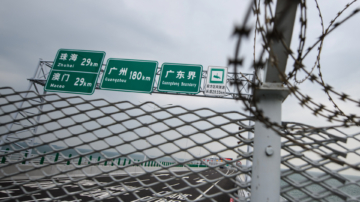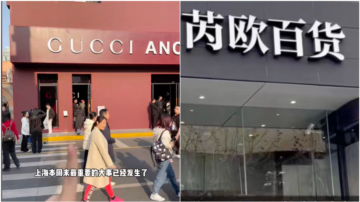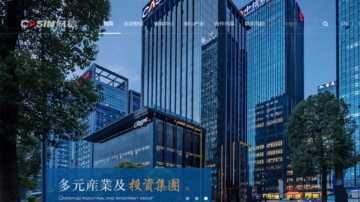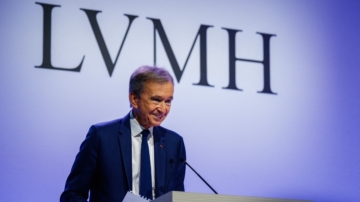【新唐人2013年08月03日訊】最近,中國大陸長沙遠大集團計劃修建世界第一高樓,引發許多爭議。德國經濟學家安德魯•勞倫斯於1999年首先提出[摩天大樓指數]的概念,也被稱為摩天大樓魔咒。他發現,摩天大樓與經濟有著驚人的關聯,經濟衰退或股市蕭條通常發生在摩天大樓建成前後。美國《彭博社》7月29號發表文章指出,中國目前的經濟狀態,難逃摩天大樓魔咒的厄運。
《彭博社》專欄作家白賽克(William Pesek)的文章比照了日本、馬來西亞、阿聯酋和美國在歷史上建造摩天大樓與經濟危機的密切聯繫。
白賽克舉例說,1998年吉隆玻雙子塔樓建成後,成為全球最大大樓,而股市和房地產投機卻引爆了亞洲金融危機。十年後,阿聯酋迪拜828米的哈利法塔成為世界第一高樓後,迪拜隨即陷入經濟危機之中。
《商業內幕》整理了過去140年全球11座與金融危機關係密切的摩天大樓的資料。發現摩天大樓指數預示經濟衰退屢屢應驗。摩天大樓熱是標誌著經濟崩潰即將來臨的一個可靠的指標。
北京天則經濟研究所副所長馮興元認為,摩天大樓指數確實有一定道理。
天則經濟研究所副所長馮興元:「當你經濟高漲的很厲害的時候,可能衰退就快開始了。就是我們古代陰跟陽的關係。就是陰可以轉成陽。月亮滿了就要開始轉向缺,缺了慢慢轉向圓。經濟高漲的時候,很多企業家出臺一些大項目,但是等他出臺的差不多的時候,經濟開始衰退。」
白賽克針對中國列舉了很多數據。例如,2012年統計資料顯示,全球排名前20的高樓中,10座在中國。加上在建的高樓,到2014年,全球排名前20高樓,中國將獨攬13座。他表示,以目前資產泡沫和地方政府巨額債務問題越來越嚴重的經濟現狀,中國恐遭遇摩天大樓魔咒厄運。
馮興元:「如果有的話,已經中了。我們中國經濟現在就在調整期。我們經濟已經走向sluggish,sluggish指的是不景氣。」
天則經濟研究所所長助理段紹譯觀察表示,長沙沒有必要建這樣一個高樓,遠大集團董事長張躍可能另有所圖。
天則經濟研究所所長助理段紹譯:「也許他這個大樓根本就建不起來,只是一個炒作而已。但是哪一天他真的建起來了,按照遠大現在的企業規模,他的項目可能會沒有甚麼利潤,可能會虧損,但是他同樣很在乎摩天大樓產生的對他的品牌的宣傳和推廣。」
根據《2012中國摩天城市》報告,中國目前有470座摩天大樓,在建摩天大樓332座,另有516座已經完成土地拍賣、設計招標或已奠基。美國現有的533座摩天大樓,而在建及規劃的摩天大樓只有30座。
針對中國近年來的摩天大樓熱勞倫斯曾表示:「過於樂觀的開發商,建設標誌性建築的政治願望,以及非常樂於把錢借出去的銀行,這些因素都會促成摩天大樓魔咒]。
遠大集團宣稱,天空之城將花六個月進行基礎施工,四個月進行地面建築。而一般來說,超高層建築的建設週期需要5至10年。迪拜塔的建設就花了六年。
白賽克認為,中國經濟快速和廉價的增長並不意味著中國已經建立了一個穩定,高效和多樣化的經濟。如果天空之城是經濟學家衡量中國經濟的唯一指標的話,那麼中國經濟已經深陷危機。
採訪編輯/秦雪 後製/王明宇
Changsha Tallest Building Indicates China Set to Suffer Skyscraper Curse
Changsha City in China is set to build the world´s tallest
building, but it has been surrounded with controversies.
In 1999, German Economist Andrew Lawrence
first proposed “Skyscraper Index: Faulty Towers”.
It has also become known as the “Curse of the Skyscraper”.
Lawrence found that skyscraper construction
is correlated with economic recession.
Or, that stock market depression usually
occurs around skyscrapers being completed.
On July 29, Bloomberg commented
on China´s current economic situation.
It suggests China will have to be very
lucky to avoid the skyscraper curse.
William Pesek is a Bloomberg columnist.
He highlighted that in Japan, Malaysia, the United Arab
Emirates and the US, there was an uncanny correlation
between skyscrapers construction, and economic downturns.
William Pesek: “In the late 1990s, Kuala Lumpur´s
Petronas Towers opened at the height of the Asian crisis.
A decade later, Dubai´s economy hit a wall
right on cue, as the 828-meter Burj Khalifa
received its Guinness World Records mention.”
Business Insider studied 11 skyscrapers whose construction
correlated with a financial crises of that particular time.
They found that the skyscraper index has
predicted history´s worst financial crises.
Booms in skyscraper construction coincide
with the beginning of economic downturns.
Feng Xingyuan, Deputy Director of Beijing Unirule Institute
of Economics, thinks the skyscraper index does have logic.
Feng Xingyuan: “With an economic
upsurge, a recession may begin soon.
It is similar to the association of Yin and
Yang. Yin can be converted into Yang.
When the moon reaches its full phase,
it will gradually cycle back to dark.
Then it slowly comes back to full moon again.
When an economy upsurges, many
entrepreneurs launch some major projects.
After a period of time, recession begins.”
William Pesek draws on several statistics. In 2012,
China had 10 of the world´s tallest skyscrapers.
By 2014, China will have 13 of the
world´s top 20 tallest buildings.
Pesek said highlights China´s asset bubble,
and the growing local-government debts.
It seems set to suffer the skyscraper curse.
Feng Xingyuan: “If there is any
curse, China has already been hit.
China´s economy is in an adjustment period, and is sluggish.”
Duan Shaoyi, Assistant Director of Beijing
Unirule Institute of Economics commented.
It is unnecessary to build such a tall building in Changsha.
Zhang Yue, president of Broad Group,
is likely to have other intentions.
Duan Shaoyi: “Maybe the project won´t
be implemented, and it is just propaganda.
If it really will be constructed one day, according
to Broad Group´s financial capacity, there is no
profit in this project, and it may work at a loss.
However, they care about the skyscraper, as it brings
the advertisement and promotion for their brand.”
According to 2012 China Sky City report, China now has
470 skyscrapers. 332 skyscrapers are under construction.
There are 516 more scheduled to be built.
The US now has 533 skyscrapers, and there are 30
skyscrapers under construction, with others planned.
Regarding China, Andrew Lawrence said
that overly optimistic developers want
to build “landmark” political aspirations.
The banks are very happy to lend money, and
these factors will contribute to the “skyscraper curse.”
Broad Group claims that the “Sky City” project
will take 6 months for underground construction.
It will take a further 4 months for above ground construction.
Generally speaking, skyscrapers take 5-6 years to complete.
Burj Dubai took 6 years.
Pesek commented that China´s
economic growth is fast and cheap.
The growth does not mean that China has
created a stable, efficient or diverse economy.
If Broad Group´s “Sky City” project is the only indicator
available to economists, they would have to
conclude that China´s economy crisis was nigh.
《彭博社》專欄作家白賽克(William Pesek)的文章比照了日本、馬來西亞、阿聯酋和美國在歷史上建造摩天大樓與經濟危機的密切聯繫。
白賽克舉例說,1998年吉隆玻雙子塔樓建成後,成為全球最大大樓,而股市和房地產投機卻引爆了亞洲金融危機。十年後,阿聯酋迪拜828米的哈利法塔成為世界第一高樓後,迪拜隨即陷入經濟危機之中。
《商業內幕》整理了過去140年全球11座與金融危機關係密切的摩天大樓的資料。發現摩天大樓指數預示經濟衰退屢屢應驗。摩天大樓熱是標誌著經濟崩潰即將來臨的一個可靠的指標。
北京天則經濟研究所副所長馮興元認為,摩天大樓指數確實有一定道理。
天則經濟研究所副所長馮興元:「當你經濟高漲的很厲害的時候,可能衰退就快開始了。就是我們古代陰跟陽的關係。就是陰可以轉成陽。月亮滿了就要開始轉向缺,缺了慢慢轉向圓。經濟高漲的時候,很多企業家出臺一些大項目,但是等他出臺的差不多的時候,經濟開始衰退。」
白賽克針對中國列舉了很多數據。例如,2012年統計資料顯示,全球排名前20的高樓中,10座在中國。加上在建的高樓,到2014年,全球排名前20高樓,中國將獨攬13座。他表示,以目前資產泡沫和地方政府巨額債務問題越來越嚴重的經濟現狀,中國恐遭遇摩天大樓魔咒厄運。
馮興元:「如果有的話,已經中了。我們中國經濟現在就在調整期。我們經濟已經走向sluggish,sluggish指的是不景氣。」
天則經濟研究所所長助理段紹譯觀察表示,長沙沒有必要建這樣一個高樓,遠大集團董事長張躍可能另有所圖。
天則經濟研究所所長助理段紹譯:「也許他這個大樓根本就建不起來,只是一個炒作而已。但是哪一天他真的建起來了,按照遠大現在的企業規模,他的項目可能會沒有甚麼利潤,可能會虧損,但是他同樣很在乎摩天大樓產生的對他的品牌的宣傳和推廣。」
根據《2012中國摩天城市》報告,中國目前有470座摩天大樓,在建摩天大樓332座,另有516座已經完成土地拍賣、設計招標或已奠基。美國現有的533座摩天大樓,而在建及規劃的摩天大樓只有30座。
針對中國近年來的摩天大樓熱勞倫斯曾表示:「過於樂觀的開發商,建設標誌性建築的政治願望,以及非常樂於把錢借出去的銀行,這些因素都會促成摩天大樓魔咒]。
遠大集團宣稱,天空之城將花六個月進行基礎施工,四個月進行地面建築。而一般來說,超高層建築的建設週期需要5至10年。迪拜塔的建設就花了六年。
白賽克認為,中國經濟快速和廉價的增長並不意味著中國已經建立了一個穩定,高效和多樣化的經濟。如果天空之城是經濟學家衡量中國經濟的唯一指標的話,那麼中國經濟已經深陷危機。
採訪編輯/秦雪 後製/王明宇
Changsha Tallest Building Indicates China Set to Suffer Skyscraper Curse
Changsha City in China is set to build the world´s tallest
building, but it has been surrounded with controversies.
In 1999, German Economist Andrew Lawrence
first proposed “Skyscraper Index: Faulty Towers”.
It has also become known as the “Curse of the Skyscraper”.
Lawrence found that skyscraper construction
is correlated with economic recession.
Or, that stock market depression usually
occurs around skyscrapers being completed.
On July 29, Bloomberg commented
on China´s current economic situation.
It suggests China will have to be very
lucky to avoid the skyscraper curse.
William Pesek is a Bloomberg columnist.
He highlighted that in Japan, Malaysia, the United Arab
Emirates and the US, there was an uncanny correlation
between skyscrapers construction, and economic downturns.
William Pesek: “In the late 1990s, Kuala Lumpur´s
Petronas Towers opened at the height of the Asian crisis.
A decade later, Dubai´s economy hit a wall
right on cue, as the 828-meter Burj Khalifa
received its Guinness World Records mention.”
Business Insider studied 11 skyscrapers whose construction
correlated with a financial crises of that particular time.
They found that the skyscraper index has
predicted history´s worst financial crises.
Booms in skyscraper construction coincide
with the beginning of economic downturns.
Feng Xingyuan, Deputy Director of Beijing Unirule Institute
of Economics, thinks the skyscraper index does have logic.
Feng Xingyuan: “With an economic
upsurge, a recession may begin soon.
It is similar to the association of Yin and
Yang. Yin can be converted into Yang.
When the moon reaches its full phase,
it will gradually cycle back to dark.
Then it slowly comes back to full moon again.
When an economy upsurges, many
entrepreneurs launch some major projects.
After a period of time, recession begins.”
William Pesek draws on several statistics. In 2012,
China had 10 of the world´s tallest skyscrapers.
By 2014, China will have 13 of the
world´s top 20 tallest buildings.
Pesek said highlights China´s asset bubble,
and the growing local-government debts.
It seems set to suffer the skyscraper curse.
Feng Xingyuan: “If there is any
curse, China has already been hit.
China´s economy is in an adjustment period, and is sluggish.”
Duan Shaoyi, Assistant Director of Beijing
Unirule Institute of Economics commented.
It is unnecessary to build such a tall building in Changsha.
Zhang Yue, president of Broad Group,
is likely to have other intentions.
Duan Shaoyi: “Maybe the project won´t
be implemented, and it is just propaganda.
If it really will be constructed one day, according
to Broad Group´s financial capacity, there is no
profit in this project, and it may work at a loss.
However, they care about the skyscraper, as it brings
the advertisement and promotion for their brand.”
According to 2012 China Sky City report, China now has
470 skyscrapers. 332 skyscrapers are under construction.
There are 516 more scheduled to be built.
The US now has 533 skyscrapers, and there are 30
skyscrapers under construction, with others planned.
Regarding China, Andrew Lawrence said
that overly optimistic developers want
to build “landmark” political aspirations.
The banks are very happy to lend money, and
these factors will contribute to the “skyscraper curse.”
Broad Group claims that the “Sky City” project
will take 6 months for underground construction.
It will take a further 4 months for above ground construction.
Generally speaking, skyscrapers take 5-6 years to complete.
Burj Dubai took 6 years.
Pesek commented that China´s
economic growth is fast and cheap.
The growth does not mean that China has
created a stable, efficient or diverse economy.
If Broad Group´s “Sky City” project is the only indicator
available to economists, they would have to
conclude that China´s economy crisis was nigh.

